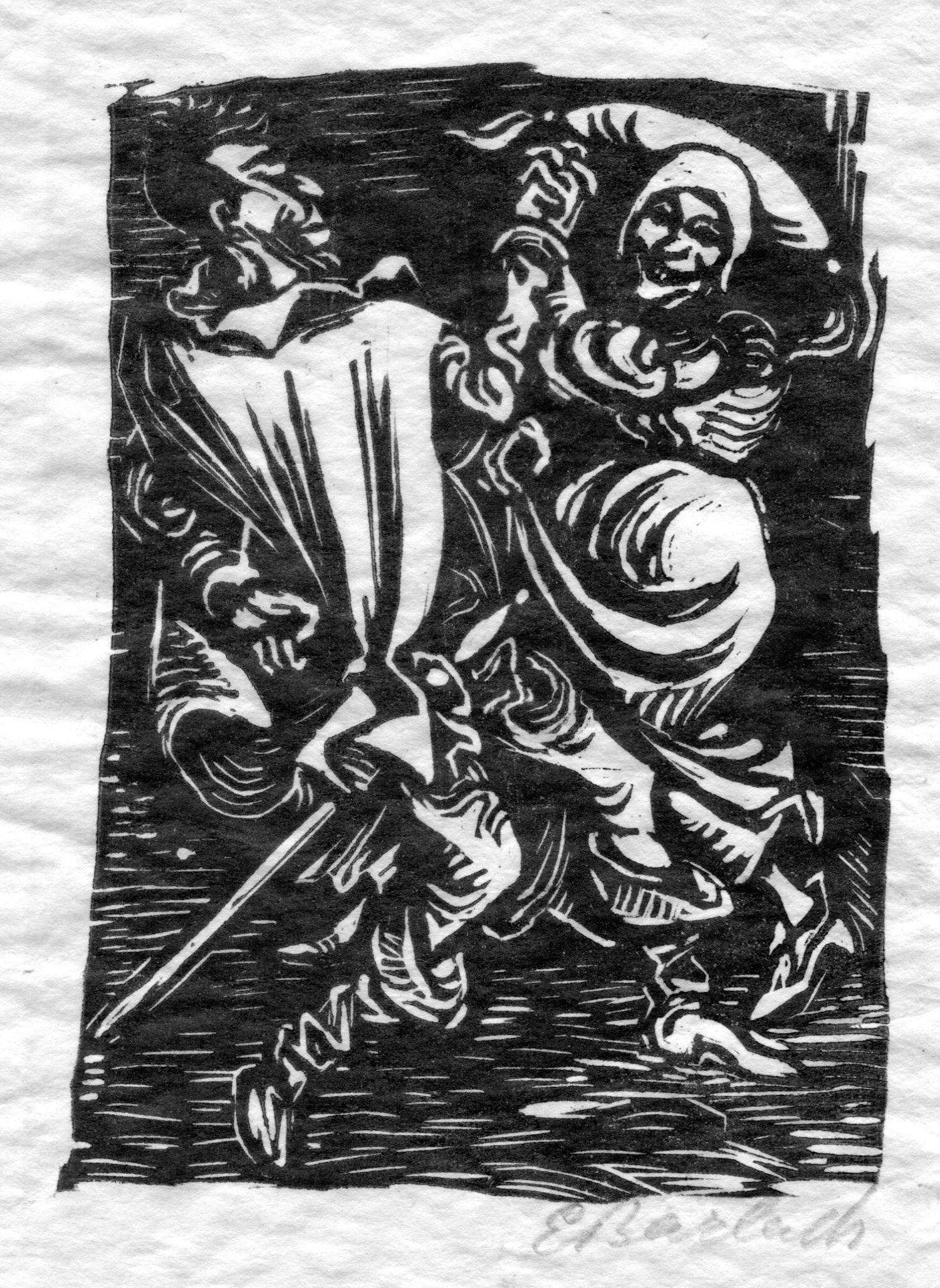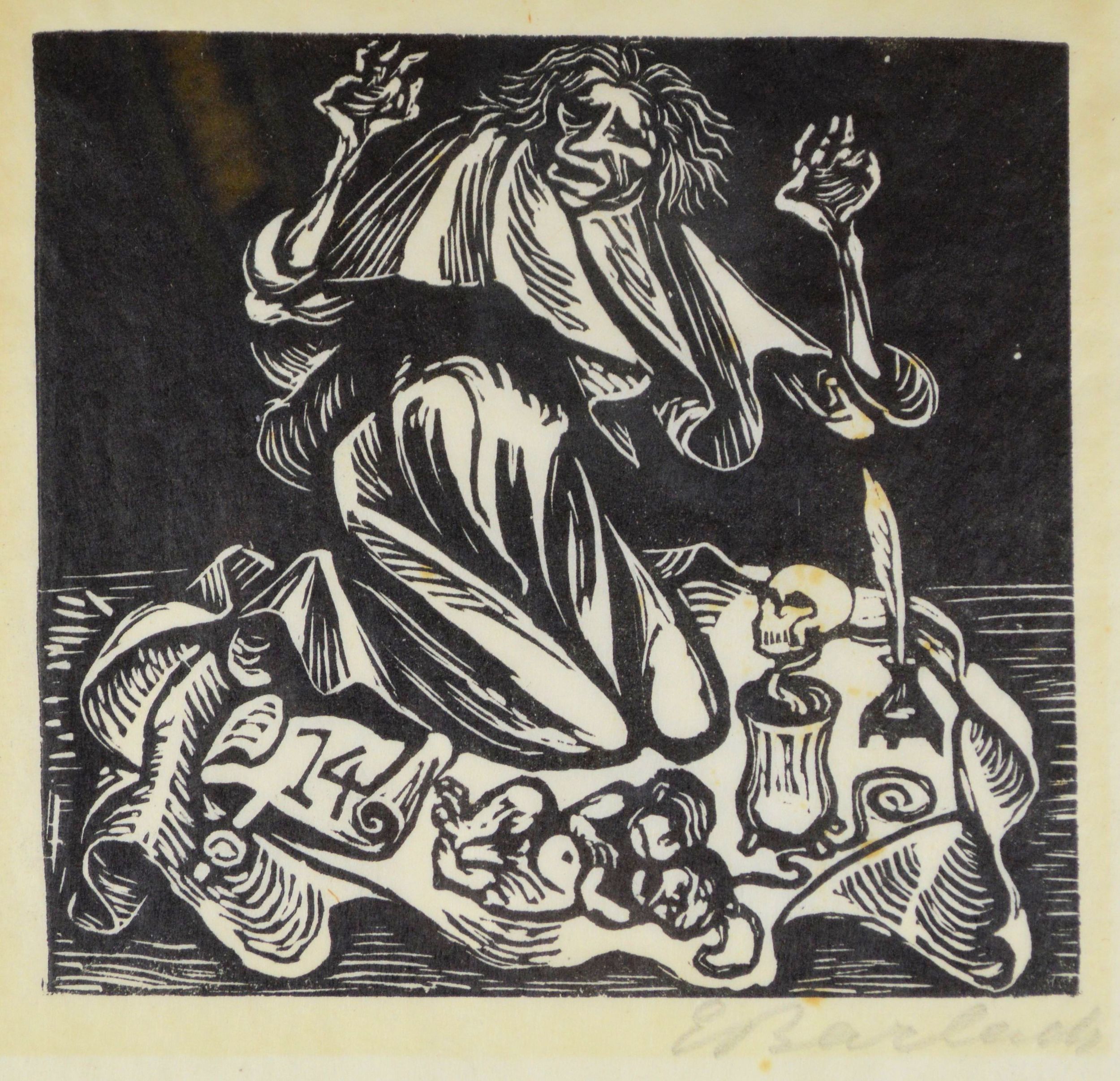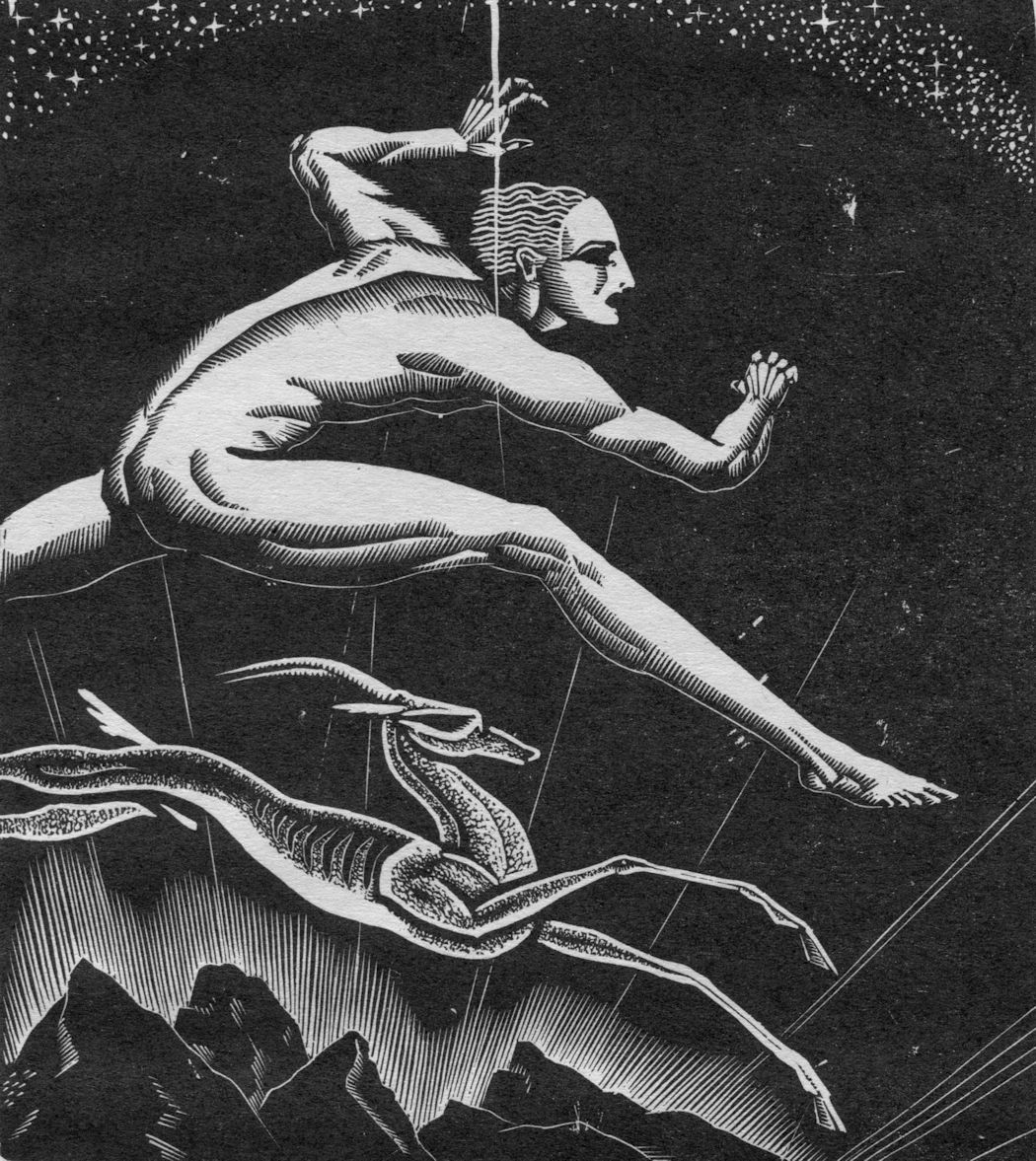Ernst Barlach (1870 - 1938)
Barlach was born in Wedel, Holstein. He studied at the Hamburg Trade School and developed his artistic talents at the Royal Art School in Dresden, followed by a year at the Académie Julian in Paris. Barlach then worked for some time as a sculptor, with a solo exhibition in 1904 at Berlin. His exposure to new forms and styles during a visit to Russia in 1906 and financial security provided by a salaried position with Paul Cassirer in Berlin allowed Barlach to develop a distinctive sculpltural style that also manifested itself in a large body of woodcuts, which he began producing ca. 1910.
Barlach became an ardent pacifist after a brief term of service during World War I and his subsequent sculptures and prints reflected this profound change and drew harsh criticism from the political right. With the rise of the National Socialists to power, Barlach's career was severely restricted: his works were confiscated in 1936 and he was forbidden to create new work thereafter. He lived at Güstrow in Mecklenburg, where he had settled in 1910, and died in 1938.

Mephistopheles tanzend mit der Alten
Woodcut on Japan paper, 1923. Proof for plate 16 from illustrations by Barlach for Goethe's Walpurgisnacht. Signed by Barlach in pencil in lower right-hand corner. A fine impression; paper is rippled and very slightly darkened in original mat area
$375

Die Trödelhexe
Woodcut on Japan paper, 1923. Proof of plate 14 of illustrations by Barlach for Goethe's Walpurgisnacht. Signed by Barlach in pencil in lower right-hand corner. A fine impression; paper is moderately toned in original mat area
$375
